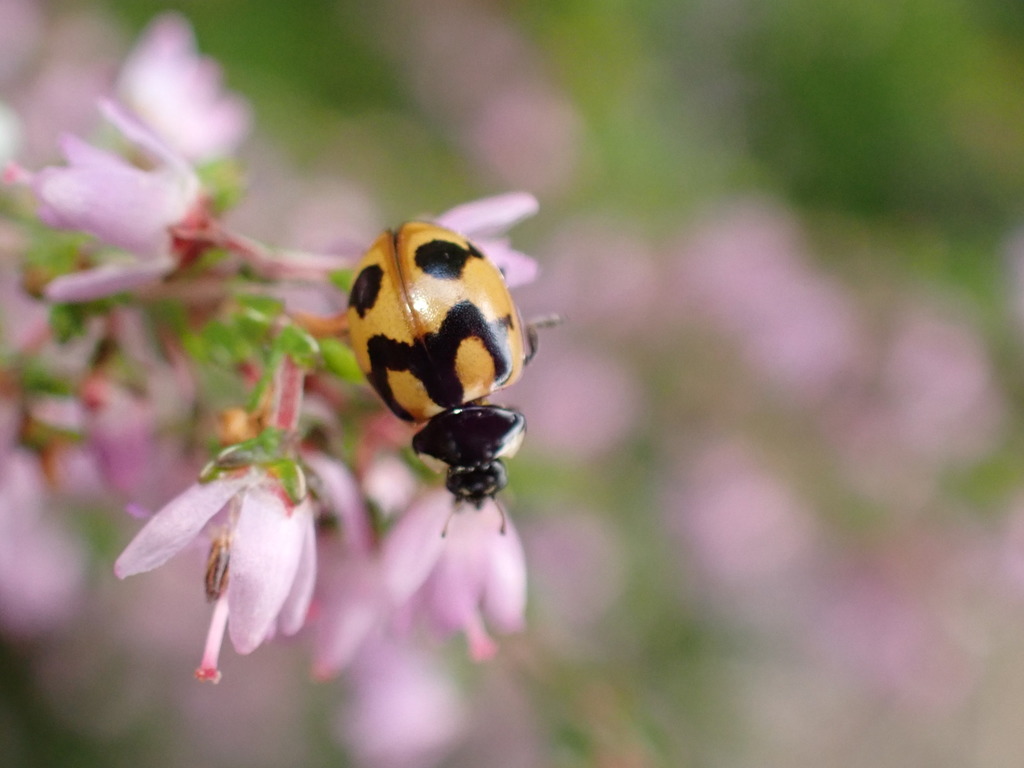
Hieroglyphic Lady Beetle © Charlie Hohn
The Hieroglyphic Lady Beetle is native to North America, as well as Europe and Asia. It feeds on aphids and overwinter in coarse, woody debris. It is usually red with large black spots outlined by yellow bands.
Status
Native
Listed as Imperiled in Nova Scotia; Vulnerable in New Brunswick; and Apparently Secure in Ontario, Saskatchewan, and Alberta. The Hieroglyphic Lady Beetle has not been ranked in the United States.
Last Seen
2021
Fun Fact
Hieroglyphic Lady Beetles can be found north beyond the Polar Circle.
Identification
Hieroglyphic Lady Beetles are typically 3.7 to 4.7 mm in length.
- Head: Black, with two pale patches in between the eyes.
- Pronotum: Black, with two pale, rectangular patches. The patches are located on the anterolateral (front corners, near the head) portions of the pronotum. The patches are sometimes connected by a pale margin along the front of the pronotum.
- Elytra: Overall red to orange in color. There is a black patch along the top of the elytra, near the pronotum, resembling a three-pronged comb, with the teeth pointing towards the pronotum. On the rear end of the elytra, there are two large black spots (one per elytron). The black patches are sometimes lined with a light yellowish border. Elytra pattern can vary.
- Legs: Dark brown to black.
- Hieroglyphic Lady Beetles have a pretty distinct look and are not commonly misidentified.
Habitat
Shrubby vegetation and trees.
General Range
Northeastern United States, west through the Great Lakes to the coast, then north across most of Canada, excluding much of British Columbia. Can also be found in Europe and parts of Asia.
Food
Feeds on aphids, leaf-beetle larvae, and small caterpillars.
Life History
Unknown. Very little information is available on the Hieroglyphic Lady Beetle.
More Information
You can find more information about Hieroglyphic Lady Beetles using the following links:
Vermont Distribution
Visit the iNaturalist Observation Map and Occurrence Records to find out where Hieroglyphic Lady Beetles have been seen in Vermont.









